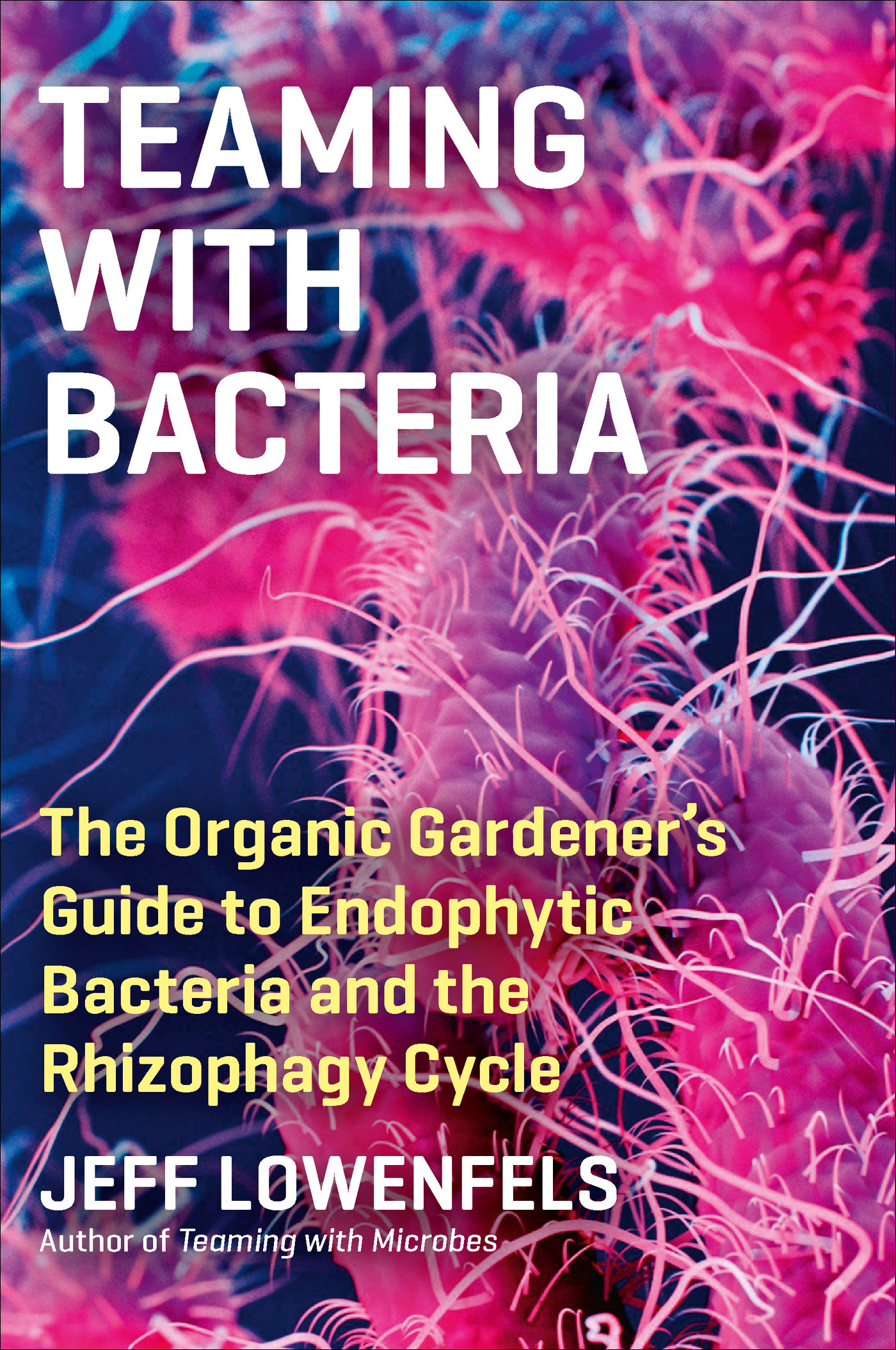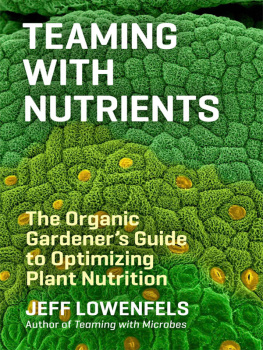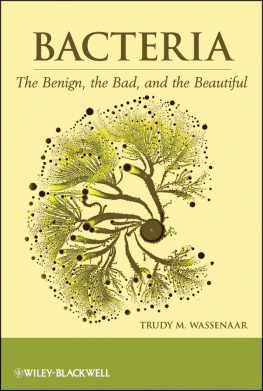Contents
Guide
Page List


Paenibacillus spp.
TEAMING
WITH
BACTERIA
The Organic Gardeners Guide to
Endophytic Bacteria and the
Rhizophagy Cycle
JEFF LOWENFELS

For Jude
I feel it in my branches, I feel it in my roots
Endophytes are in me, from my flowers to my roots.
from Andy MacKinnons endophyte
sing-along at a Washington Native Plant
Society meeting
CONTENTS

FOREWORD
PLANTS EVOLVED IN the presence of bacteria and other microbes; they could rely on microbes through evolutionary time for nutrient and development control. Rhizophagy delivers nutrients to plants, but that is not the only function of the microbes involved. Plants also use intracellular microbes in their development and growth processes. The bottom line is this: without microbes (mostly bacteria), plants get less nutrients and cannot develop properly. Those are two facts.
It is not only about rhizophagy (a cycle that definitely delivers nutrients, as multiple experiments have shown) but also development (again, per multiple experiments) and other effects that we do not yet knowfor example, all the effects intracellular microbes have on plants and plant gene expression.
Healthy plants really are teaming with bacteria. It is mind-blowing, but the bacteria are distributed all over the plantshoots, leaves, and fruits. Where plants do not oxidize them, these endophytic bacteria even enter into nuclei. We have seen them in chloroplasts in some casesprobably to escape being degraded in the cytoplasm.
I had a visit with a creative young scientist, David Johnston-Monje (who authored an article about endophytes in corn) in Cali, Colombia. Over some craft beers we discussed recent observations concerning microbes emerging from tomato glandular trichomes on leaves and stems. We speculated (hypothesized) that all plant hairs could originate from intracellular bacteria stimulationand that the function of this emergence of microbes from trichomes onto the surfaces of leaves was to originate the phylloplane microbial community for defense of leaves.
We know that cannabis makes lots of glandular trichomes on flowers and fruits. Are microbes important in the development of those cannabinoid-laden structures? Do the microbes affect cannabinoid content? We dont know.
I think this book is important and will give people a glimpse into a future where most of what we thought about plants will be modified substantially. The plant microbiome will play a much more prominent role in thinking about plants.
Some of this books young readers may be the ones to make new discoveries about how the plant microbiome works. I hope that will be the case.
James Francis White
Rutgers University
March 2021


PREFACE
IT IS DIFFICULT to write a booktruly not a task to be undertaken lightly. To do it justice, you need to crawl down a rabbit hole and stay there until the job is done. It is lonely down there, so the subject matter has to be worth it. Having reemerged, I can say with confidence: rhizophagy is most definitely worth the trip.
I first saw the word in 2010 when my friend Ross sent me a one-word text: Rhizophagy! At first I thought he was calling me a weird name, but I knew the words Greek roots (rhizo, root; phagy, to eat). Sorhizophagy, root-eating. No other information was available back then. I eventually learned that rhizophagy was root cells engulfing microbes and using them for nutrients. I filed it away.
Fast forward ten years. While reading up on endophytic bacteria
those that live inside plants for part of their lives without causing the plant harmI came across research papers on the subject of rhizophagy by James Francis White, a professor at Rutgers University. His team confirmed and expanded earlier studies conducted by Chanyarat Paungfoo-Lonhienne and her associates at the University of Queensland, Australia. These scientists deserve our attention. Nobel Prizes for you all.
Endophytic bacteria are found inside every single plant. They usually help the plant, by aiding nutrient acquisition, increasing stress tolerances, and controlling pathogens. Yet little is written about endophytic bacteria for the gardening world. Whats more, it appears a new plantmicrobe nutrient cycle is in play. Bacteria move from the soil into young root cells at root tips. As they do, they trigger the plant to produce chemicals that dissolve the bacterias cell walls. Amazingly, the wall-less bacteria remain viable and actually increase in number as they are circulated around the outer edges of the root celland the dissolved components of the bacterial cell walls become plant nutrients.
In an attempt to neutralize the wall-removing chemicals, the intracellular bacteria produce nitric oxide; this is converted to nitrates, and these too are absorbed by the plant root cell (more nutrients!). And all the while, these bacteria are releasing ethylene into the plant cell, causing the cell to elongate.
When enough of these wall-less bacteria accumulate in the root cell, their ethylene causes a root hair to form, and they are ejected from its tip back out into soil. The formerly endophytic bacteria, now living in soil, rebuild their walls, fatten up, and repeat the cycle.
BREAKING NEWS
Wait. What? Which plants? All plants that have root hairs. Root hairs are formed by intracellular bacteria? And these intracellular bacteria provide significant amounts of a plants nutrient needs? This is in addition to the nutrients derived from the soil? Time for another book.
I thought long and hard about whether another trip down the writers rabbit hole would be worth it. When I emerged the first time, I had a manuscript for Teaming with Microbes: The Organic Gardeners Guide to the Soil Food Web (Timber Press, 2006). I made that journey because I was as excited then as I am now about bacterial endophytes and the rhizophagy cycle. I knew other gardeners would benefit from knowledge of the soil food web, a cycle which had been uncovered primarily by Elaine Ingham but was not yet generally accepted. If there was an introductory book on the subject, other people might get excited about Dr. Inghams work, and I would have gardeners to talk to about microbes, soil, and plants.
Teaming with Microbes (you do need to read it) is all about the soil food web as we knew it at the time. At its core is this premise: plants are in control of soil microbes, which they attract to their root zones. These microbes produce nutrients in inorganic form so they can taken up by the plant.
The second time I went down the hole was to explain how plants used those nutrients.















